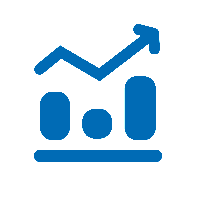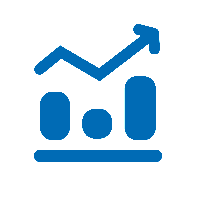 Gas prices have fallen dramatically within the last two months. The cost of a single barrel of oil is half of what is was just eight months ago, and nearly everyone in the United States has felt the implications. Prices dropped below $2 a gallon across much of the contiguous United States, and fell as low as $1.82 in Arizona.
Gas prices have fallen dramatically within the last two months. The cost of a single barrel of oil is half of what is was just eight months ago, and nearly everyone in the United States has felt the implications. Prices dropped below $2 a gallon across much of the contiguous United States, and fell as low as $1.82 in Arizona.
For organizations that regularly perform field-based functions, such as sales or merchandising, this drastic drop in price was a welcome change, alleviating much of the financial burden that comes with transportion costs for mobile employees and goods. Unfortunately, there is bad news for those business owners who were hoping that this was a sustainable trend. Gas prices have risen $0.13 in the last two weeks, and forecasts say that price could increase by another $0.10 in the near future. On the other hand, business owners can find solace in the fact that even oil industry experts are saying that the gas prices which we have all become accustomed to over the last decade will not return for years, as domestic U.S. oil production has nearly doubled within the last six years.
So what exactly are you saving? And how can you utilize this period of low gas prices?
For those organizations with a fleet of company cars or those who are in the process of creating one, it may be tempting to get a flashy gas-guzzler vehicle which captures attention and is attractive to potential hires. Bad idea.
Already the United States has seen a sharp increase in SUV and pickup truck purchases since oil prices have declined. History tells us however, that uncertainty in the oil market could see fuel costs rising by 30% in the next few years. Let’s look at a quick example to put that amount of money in perspective.
Mark owns a small third-party merchandising company, and works primarily within a greater metro area. He has ten reps who travel around 20,000 miles per year on average. Enticed by impressive gas-guzzling SUVs, Mark buys ten brand new 2015 vehicles for his sales reps. Although they average only 15 MPG between city and highway, they portray an impressive image, and Mark’s sales reps are clearly happy. He offers the IRS average for gas reimbursement on the vehicles, $0.56/gallon.
Mark’s employees will be paying a total of $22,933 or $2,293 per person at current fuel prices. At the current rate, Mark’s reimbursement expense comes to $7,466/year total. While this is not an insignificant amount, Mark feels that the cost is low enough to justify the appeal of the SUVs.
Two years later, gas prices have returned to the previous average of $3.28/gallon. The cost to Mark’s reps is now $36,400/ year, or $3,640 per rep. Mark’s cost has remained the same, but now he’s noticing that his reps are complaining about the crazy fuel costs they are expected to shoulder. Mark looks to sell his fleet in order to purchase more fuel efficient cars for his employees, and is shocked to find out how much they have depreciated in value. He sells the SUVs anyways and looks to hybrid and more fuel-efficient vehicles. Unfortunately for Mark, the value of those vehicles have changed inversely with SUVs, as consumers began to notice the shift in gas prices.

The issue is clear—predicting for the future is impossible, and transportation is a necessity. And while some reps will certainly want the expensive luxury car which helps create their seller persona, others will be upset and stressed if fuel costs get out of hand.
So what’s the solution?
Increase your fixed costs and decrease your variable costs as much as possible while still offering options to employees. If Mark had offered options to his employees instead of mandating the vehicle and reimbursement options, the burden of his decision would not have fallen solely on him. Offering employees a specific model of company car, helps make sure that employees will not become overwhelmed with fuel costs, potentially lowering morale and hindering their performance in the field. If employees are set on using their own vehicle, consider offering them some other form of compensation—like an increased fuel compensation. This increased fixed cost will almost always be less than maintenance costs associated with larger vehicles, and the company does not need to worry about insurance or depreciation on the vehicles.
Obviously fuel prices will continue to have huge impact on any organization that operates with reps in the field, but with the proper planning and execution, managers and business owners can create some financial security that does not greatly fluctuate with oil prices.


 Gas prices have fallen dramatically within the last two months. The cost of a single barrel of oil is half of what is was just eight months ago, and nearly everyone in the United States has felt the implications. Prices dropped below $2 a gallon across much of the contiguous United States,
Gas prices have fallen dramatically within the last two months. The cost of a single barrel of oil is half of what is was just eight months ago, and nearly everyone in the United States has felt the implications. Prices dropped below $2 a gallon across much of the contiguous United States,


